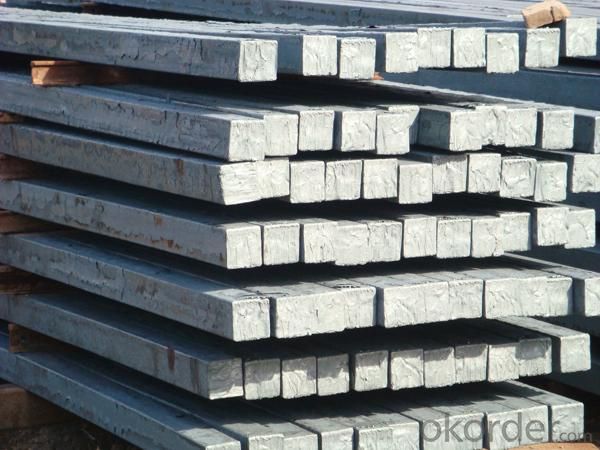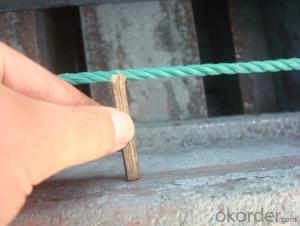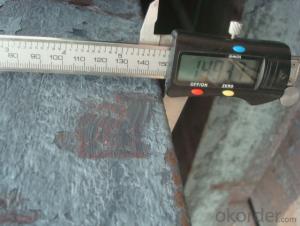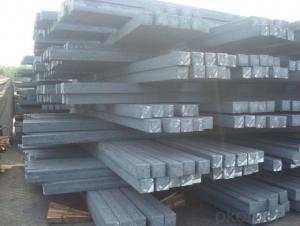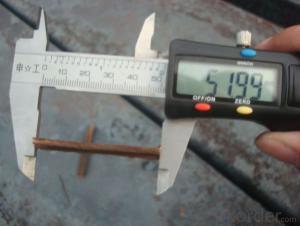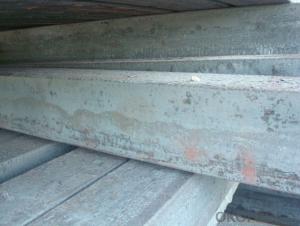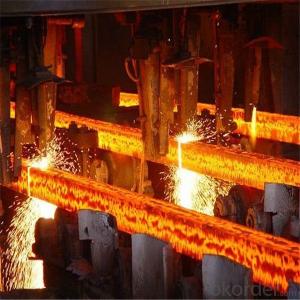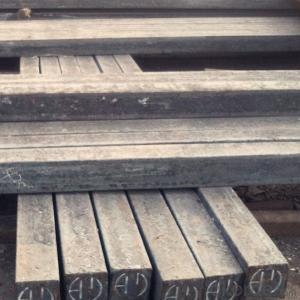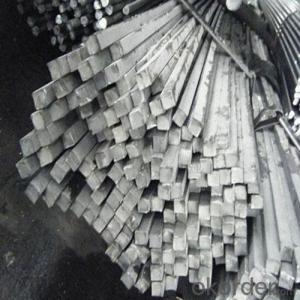Square Steel Billet, Square Bar with High Quality
- Loading Port:
- China main port
- Payment Terms:
- TT or LC
- Min Order Qty:
- 25000 m.t.
- Supply Capability:
- 35000 m.t./month
OKorder Service Pledge
OKorder Financial Service
You Might Also Like
Product Description of Square Steel Billet, Square Bar with High Quality:
square steel billet
1.3SP, 5SP
2.terms of payment: L/C at sight
3.size: 120*120mm
4.length: 5.8~12m
Specifications of Square Steel Billet, Square Bar with High Quality:
square steel billets
The following are the sizes of Billets available with Shyam Steel Industries Ltd.:
100 X 100
120x120
150 X 150
Physical Properties:
Description
As per IS 2830
Shyam Billets
Bend (max.) 5 mm per meter >= 5 mm per meter
Carbon (max.) 3mm per meter >= 3 mm per meter
Length 3 mt - 13 mt 3 mt - 9 mt
Chemical Properties:
Ladle Analysis:
Designation
Carbon
Manganese
C15 0.12-0.18 0.30-0.60
C18 0.15-0.21 0.30-0.60
C20 0.17-0.23 0.30-0.60
C15 MMn 0.12-0.18 0.60-1.00
C18 MMn 0.15-0.21 0.60-1.00
C20 MMn 0.17-0.23 0.60-1.00
C15 HMn 0.12-0.18 1.00-1.50
C18 HMn 0.15-0.21 1.00-1.50
C20 HMn
0.17-0.23 1.00-1.50
Production of Square Steel Billet, Square Bar with High Quality:
Billets of different designations are manufactured in three different grades namely A, B, C having sulphur, phosphorous content (on ladle analysis) and carbon equivalent as follows:
Chemical Analysis:
Grade Sulphur Phosphorous Carbon Equivalent (CE)1
Max Max Max
A 0.05 0.05 0.42
B 0.045 0.045 0.41
C 0.04 0.04 0.39
FAQ:
Q1: Why buy Materials & Equipment from OKorder.com?
A1: All products offered byOKorder.com are carefully selected from China's most reliable manufacturing enterprises. Through its ISO certifications, OKorder.com adheres to the highest standards and a commitment to supply chain safety and customer satisfaction.
Q2: How do we guarantee the quality of our products?
A2: We have established an advanced quality management system which conducts strict quality tests at every step, from raw materials to the final product. At the same time, we provide extensive follow-up service assurances as required.
Q3: How soon can we receive the product after purchase?
A3: Within three days of placing an order, we will begin production. The specific shipping date is dependent upon international and government factors, but is typically 7 to 10 workdays.
Images:
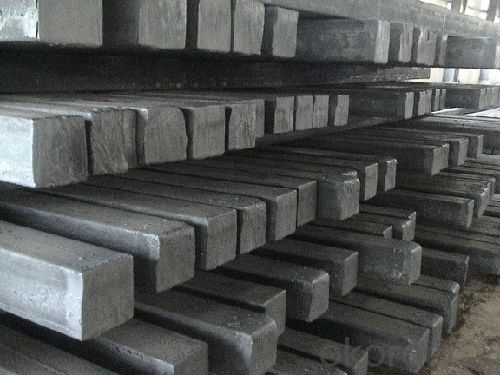
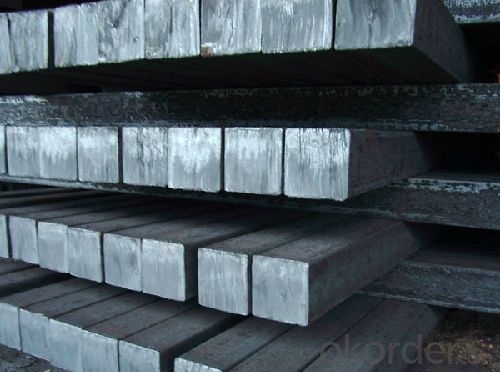
- Q: For example, screw plate (PU plate and manganese plate), carbon steel Primeton is what person rolling out?.
- Primeton Pu board generally refers to A3; carbon steel refers to the high quality carbon steel, such as No. 45 steel, 35 steel and so on;
- Q: How are steel billets used in the production of automotive fuel systems?
- Automotive fuel systems rely on steel billets as a necessary element. These billets, typically crafted from top-grade steel, serve as the primary material for manufacturing various fuel system components such as fuel injectors, fuel rails, and fuel tank brackets. The initial step in utilizing steel billets for automotive fuel systems involves selecting the appropriate steel grade. The selected steel must possess specific mechanical properties, including high strength, weldability, and corrosion resistance. These properties ensure the durability of the fuel system components, enabling them to withstand the demanding conditions and stresses they will encounter throughout their lifespan. Once the steel billets are chosen, they undergo a series of manufacturing processes, including forging, machining, and heat treatment. Forging molds the billets into the desired shapes using a combination of heat and pressure. This process guarantees that the fuel system components possess the necessary strength and resilience. Machining is another crucial stage in the production of automotive fuel systems. This process entails removing excess material from the forged billets to achieve the desired shape and dimensions. Precise machining ensures that the fuel system components fit seamlessly within the overall system, allowing for efficient and dependable fuel delivery. Following the machining process, the fuel system components undergo heat treatment. This involves subjecting the components to specific temperatures and controlled cooling rates. Heat treatment enhances the mechanical properties of the steel, further bolstering its strength and toughness. Once the fuel system components are manufactured from the steel billets and have undergone all the necessary processes, they are assembled into the final fuel system. These components play a pivotal role in facilitating the efficient and safe delivery of fuel from the tank to the engine. For instance, fuel injectors ensure precise fuel delivery, fuel rails provide a pathway for fuel flow, and fuel tank brackets securely hold the tank in place. In conclusion, steel billets are an indispensable ingredient in the production of automotive fuel systems. Through a series of manufacturing processes including forging, machining, and heat treatment, these billets are transformed into high-quality fuel system components. When assembled, these components create a fuel system that enables automobiles to achieve efficient and reliable fuel delivery.
- Q: How are steel billets used in the production of oil and gas machinery?
- The production of oil and gas machinery heavily relies on steel billets. These billets are essentially semi-finished pieces of steel that undergo further processing to produce various components needed in the oil and gas industry. To begin with, steel billets are essential in manufacturing the key structural components of oil and gas machinery, such as frames, bases, and casings. These components provide the necessary strength, stability, and support to the equipment, ensuring their safe and efficient operation even in harsh operating conditions. Furthermore, steel billets are also utilized in the production of critical rotating parts, including shafts, gears, and turbines. These components experience high loads, intense pressure, and extreme temperatures, making exceptional strength and durability a requirement. Steel billets, known for their superior mechanical properties, are an ideal material for manufacturing such parts. In addition, steel billets are employed in the production of valves, fittings, and connectors that are integral to oil and gas machinery. These components are responsible for controlling the flow of oil or gas, regulating pressure, and ensuring secure connections between various equipment and pipelines. Steel billets are chosen for these applications due to their excellent corrosion resistance, which is crucial in environments where oil and gas are present. Moreover, steel billets find application in the fabrication of heat exchangers and pressure vessels used in the oil and gas industry. Heat exchangers play a vital role in cooling or heating fluids, while pressure vessels store and transport hazardous substances safely. Steel billets are preferred for these applications due to their high thermal conductivity, excellent weldability, and resistance to extreme pressures. In summary, steel billets are extensively utilized in the production of oil and gas machinery because of their exceptional mechanical properties, corrosion resistance, and thermal conductivity. These billets provide the necessary strength, durability, and reliability to the components and equipment required in the oil and gas industry, ensuring safe and efficient operations in this critical sector.
- Q: Can steel billets be used in the production of construction machinery?
- Yes, steel billets can be used in the production of construction machinery. Steel billets are semi-finished steel products that can be further processed into various shapes and sizes, including the components used in construction machinery. These billets can be hot-rolled or cold-rolled to form different types of steel products, such as bars, rods, plates, or sheets, which are commonly used in the construction industry. The high strength and durability of steel make it an ideal material for construction machinery as it can withstand heavy loads, resist corrosion, and provide structural integrity. Therefore, steel billets serve as a crucial raw material in the manufacturing process of construction machinery.
- Q: What are the different heat treatment processes for alloy steel billets?
- There are several different heat treatment processes for alloy steel billets, including annealing, normalizing, quenching, and tempering. Annealing involves heating the billets to a high temperature and then slowly cooling them to relieve internal stresses and improve ductility. Normalizing is similar to annealing but involves air cooling instead of slow cooling. Quenching involves rapidly cooling the billets in a liquid medium, such as oil or water, to increase hardness and strength. Tempering is done after quenching and involves reheating the billets to a specific temperature and then cooling them slowly to reduce brittleness and improve toughness.
- Q: How do steel billets contribute to the overall corrosion protection of a structure?
- Steel billets, which are semi-finished steel products, play a significant role in contributing to the overall corrosion protection of a structure. They contribute to corrosion protection in several ways: 1. High-quality steel composition: Steel billets are manufactured using high-quality steel that consists of various alloying elements, such as chromium, nickel, and molybdenum. These alloying elements enhance the corrosion resistance of the steel, making it less susceptible to rust and corrosion. 2. Protective coating: Steel billets are often coated with protective layers, such as zinc or epoxy coatings. These coatings act as a barrier between the steel surface and the external environment, preventing moisture, oxygen, and other corrosive substances from reaching the steel and causing corrosion. 3. Durability and strength: Steel billets are known for their high strength and durability. When used in the construction of a structure, they provide a strong foundation and structural support. This strength and durability minimize the chances of structural damage and corrosion, ensuring the longevity and stability of the structure. 4. Weldability: Steel billets are highly weldable, allowing for easy and efficient joining of steel components during construction. Proper welding techniques and materials can further enhance the corrosion resistance of the structure by maintaining the integrity and continuity of the protective coatings. 5. Maintenance and repair: In case of any damage or corrosion on the structure, steel billets can be easily replaced or repaired. This ensures that the affected area can be fixed without compromising the overall integrity and corrosion protection of the structure. Regular maintenance and repair of steel billets contribute to the long-term corrosion protection of the entire structure. In summary, steel billets contribute to the overall corrosion protection of a structure through their high-quality composition, protective coatings, durability, weldability, and ease of maintenance and repair. By incorporating steel billets into construction projects, engineers and architects can ensure the longevity, safety, and corrosion resistance of structures in various environments.
- Q: Are steel billets subject to any heat treatment processes?
- Yes, steel billets are subject to heat treatment processes. Heat treatment processes such as annealing, normalizing, quenching, and tempering can be applied to steel billets to enhance their mechanical properties and improve their overall performance.
- Q: What are the different types of cutting methods used for steel billets?
- There are several different types of cutting methods used for steel billets, including sawing, shearing, flame cutting, and water jet cutting.
- Q: What is the typical fatigue strength of a steel billet?
- The fatigue strength of a steel billet can vary based on factors like its specific steel composition, manufacturing process, and surface treatments utilized. Fatigue strength generally refers to a material's ability to endure repeated loading and unloading cycles without breaking. Compared to other materials, steel typically possesses high fatigue strength due to its strength and durability. However, the precise fatigue strength value can differ considerably depending on the steel grade and intended use. In engineering and industry, fatigue strength is often represented by a stress-life (S-N) curve. This curve depicts the stress level exerted on the steel billet versus the number of cycles required for failure. The curve's shape offers valuable insights into the steel's fatigue behavior. It is crucial to note that determining the fatigue strength of a steel billet usually involves rigorous testing procedures. Fatigue testing machines are employed to subject the material to cyclic loading until failure occurs. These tests assist engineers and manufacturers in establishing safe operating limits for various steel grades and applications. Consequently, without specific details regarding the steel grade, manufacturing process, and other factors, it is not feasible to provide an exact value for the typical fatigue strength of a steel billet. Nevertheless, it is widely acknowledged that steel possesses excellent fatigue resistance and can withstand a significant number of cycles before failure, rendering it a dependable choice for numerous structural and mechanical applications.
- Q: What are the main factors affecting the fatigue strength of alloy steel billets?
- The main factors affecting the fatigue strength of alloy steel billets include the composition of the alloy, the presence of impurities or defects, the heat treatment process, surface conditions, and the presence of residual stresses. Additionally, the applied load, frequency, and environmental conditions can also influence the fatigue strength of alloy steel billets.
Send your message to us
Square Steel Billet, Square Bar with High Quality
- Loading Port:
- China main port
- Payment Terms:
- TT or LC
- Min Order Qty:
- 25000 m.t.
- Supply Capability:
- 35000 m.t./month
OKorder Service Pledge
OKorder Financial Service
Similar products
Hot products
Hot Searches
Related keywords



